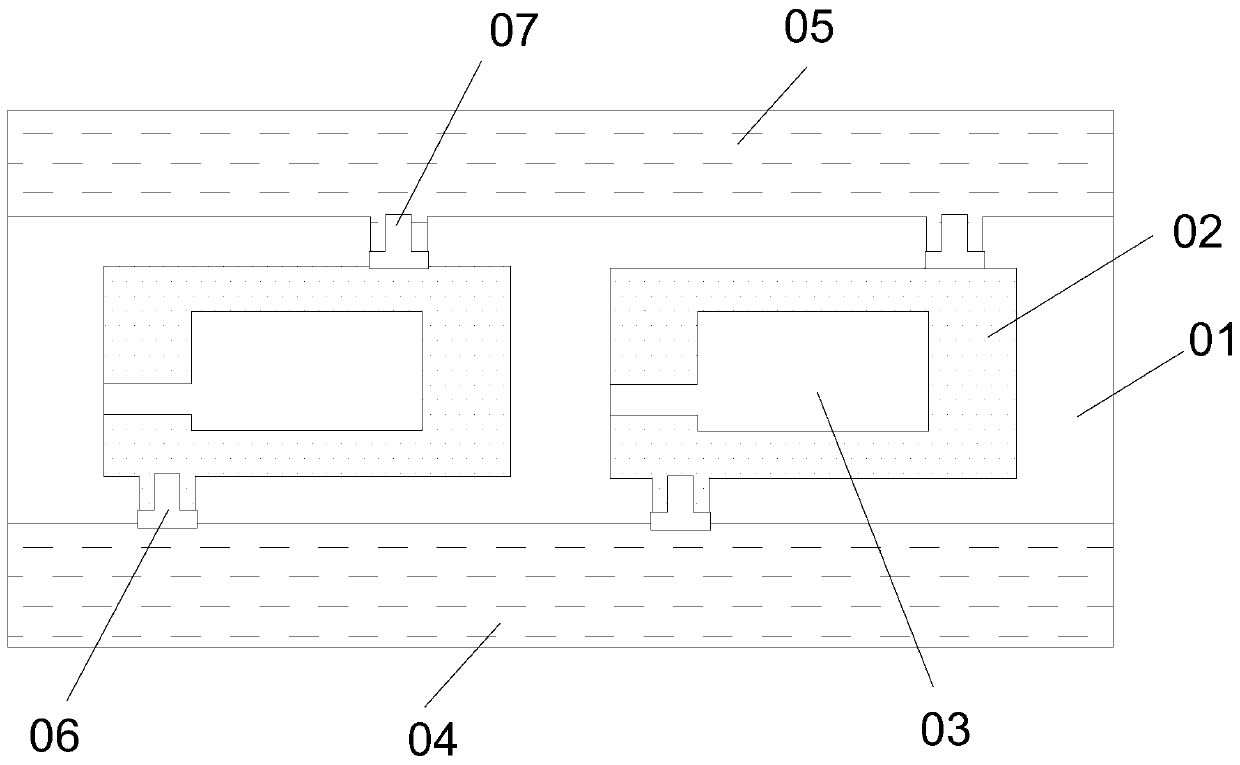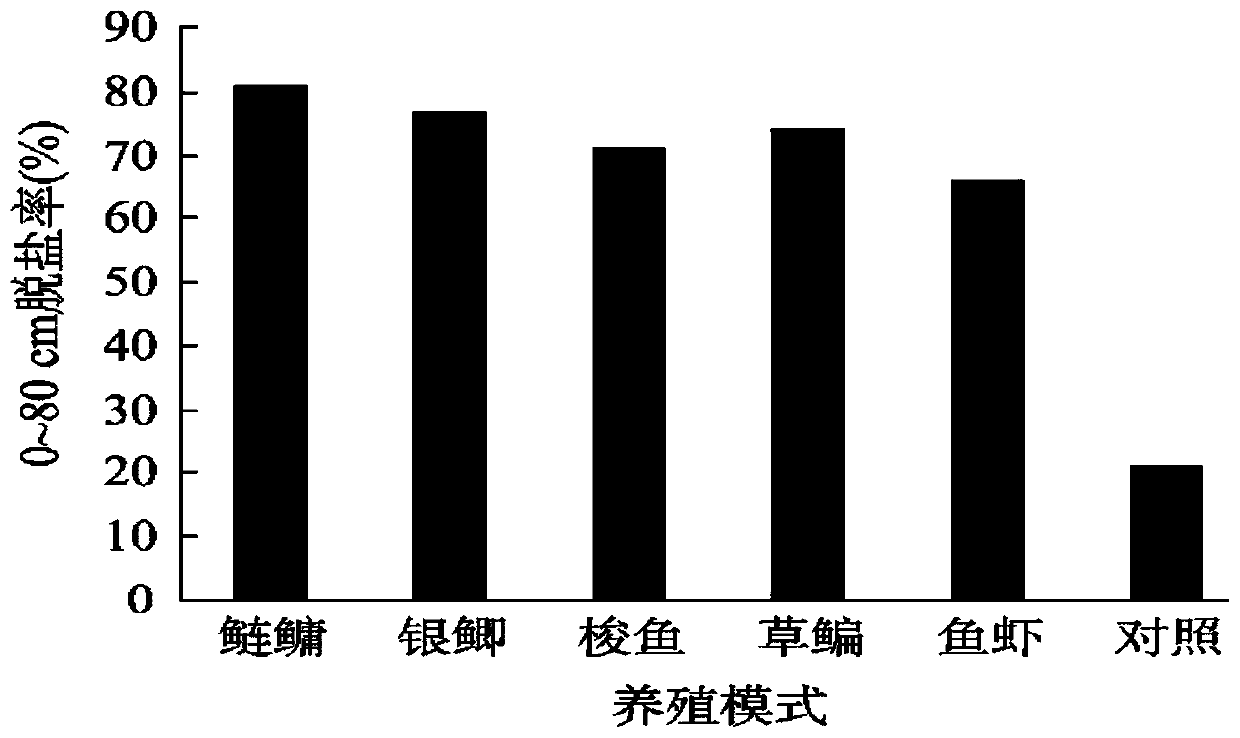Ecological protection method for coastal tidal-flat area and system employed
An ecological protection and coastal technology, applied in the direction of coastline protection, soil preparation method, fertilization method, etc., can solve the problems of lack of organic matter, high soil salinity, long cycle, etc.
- Summary
- Abstract
- Description
- Claims
- Application Information
AI Technical Summary
Problems solved by technology
Method used
Image
Examples
Embodiment 1
[0073] The present embodiment is the coastal beach ecological protection method, comprising:
[0074] The first step is to plan and design the polder pond project according to the specific conditions of the target coastal tidal flats to be protected.
[0075] The second step is to dig fishing ditches and build polder dikes on the beach surface of the target coastal tidal flats, and at least one dike pond will be surrounded by dikes. The height of the embankment is 0.8-1.6m; in this way, a polder pond with large water surface, shallow water layer and seasonal dew beach is formed. The large water surface means that the water surface area of a single polder pond is at least 100 mu when the water is stored on the beach surface, and the shallow water layer is It means that when the beach surface is impounded, the water storage depth is at least 0.8m and at most does not exceed the height of the polder dike. Excavate mutually independent drainage ditches and replenishment canals ...
Embodiment 2
[0101] This embodiment is the coastal tidal flat ecological protection system adopted in Embodiment 1, which is constructed through the following steps:
[0102] According to the specific conditions of the target coastal beach to be protected, plan and design the polder pond project; dig fishing ditches and build polder embankments on the beach surface of the target coastal tidal flat, and use polder dikes to enclose at least one polder pond, in which the fishing ditch and the beach surface are mutually connected Adjacent to each other, the depth of the fishing ditch is 2-2.5m, and the height of the embankment is 0.8-1.6m; thus forming a polder pond with a large water surface, a shallow water layer, and a seasonal dew beach. The large water surface refers to a single pold pond on the beach surface When storing water, the water surface area is at least 100 mu. The shallow water layer refers to the water storage depth of at least 0.8m and no more than the height of the embankment...
Embodiment 3
[0117] This embodiment adopts the coastal beach ecological protection method of embodiment 1.
[0118] In the third step, when both aquaculture and emergent plants are planted on the beach, the preset fish farming mode is adopted. The fish farming mode includes fish-rice rotation or intercropping, fish-grass rotation or intercropping, fish-wheat Crop rotation or intercropping, fish-rape crop rotation or intercropping, fish-salt-tolerant plant rotation or intercropping combined planting and breeding modes.
[0119] In the combination of planting and breeding of fish-wheat rotation, the ratio of the land area of the fishing ditch to the planting area of barley is 1:1-20; the first preset time period is from October of the current year to May of the next year, The preset time period is from May of the next year after wheat harvest to October, the third preset time period is from October of the next year to before the next first preset time period; the fourth preset time perio...
PUM
 Login to View More
Login to View More Abstract
Description
Claims
Application Information
 Login to View More
Login to View More - R&D
- Intellectual Property
- Life Sciences
- Materials
- Tech Scout
- Unparalleled Data Quality
- Higher Quality Content
- 60% Fewer Hallucinations
Browse by: Latest US Patents, China's latest patents, Technical Efficacy Thesaurus, Application Domain, Technology Topic, Popular Technical Reports.
© 2025 PatSnap. All rights reserved.Legal|Privacy policy|Modern Slavery Act Transparency Statement|Sitemap|About US| Contact US: help@patsnap.com



